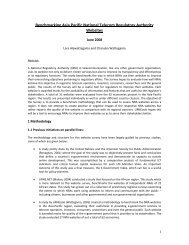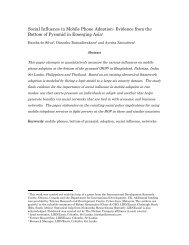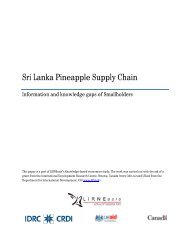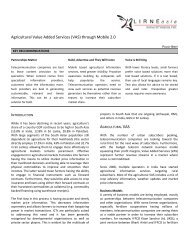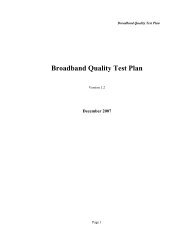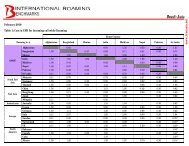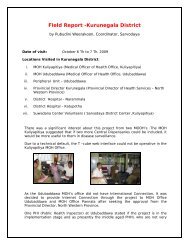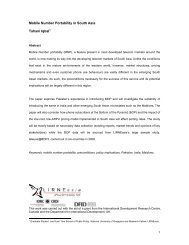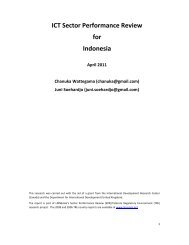Teleuse@BOP3: A Qualitative Study - LIRNEasia
Teleuse@BOP3: A Qualitative Study - LIRNEasia
Teleuse@BOP3: A Qualitative Study - LIRNEasia
You also want an ePaper? Increase the reach of your titles
YUMPU automatically turns print PDFs into web optimized ePapers that Google loves.
ownership of public phones in an urban center like Dhaka and areas close to it are quite rare but are likely to be<br />
more prominent in far interiors of the country.<br />
South East Asian countries do not show any such restrictions on female usage of public spaces. In Philippines, both<br />
male as well as female respondents use public phones only when they are out of credit on their mobile phones and<br />
rarely when they have to talk to their family members living in distant places who own a landline connection as it is<br />
cheaper to make calls from a landline to another landline. Both male and female BOP respondents avoid making<br />
special efforts by leaving their work to make calls from a public phone. With the introduction of mobile phones, the<br />
use of public phones is already on the decline in Thailand. There are no significant differences in women’s motivation<br />
to use public phones and no socio-cultural factors that influence their usage of public phones can be deduced apart<br />
from the fact that mobile conversations can be more ‘private’ in nature as opposed to using public phones.<br />
The gender differences in teleuse seem quite prominent and crop up in dependencies for phone use, recload<br />
behavior and the impact on domesticity in South Asia.<br />
Male phone owners being primary earning members of their household in all these countries, depend on their income<br />
to enable their own mobile use. Even non-earning younger male respondents are comparatively free from any<br />
dependencies on parents for getting phone money. In contrast, all the housewives in the research said they are<br />
reliant on their husbands to fill up their phones. Only the working women are self reliant but they still exercise<br />
substantial control over their own spending.<br />
In Bangladesh, for example, the average amount of the recharge which male respondents undertake for themselves<br />
maybe in the region of 20 taka (USD 0.28) but the frequency of the recharge is at least once a day, leading to a<br />
minimum of 140 taka / week (USD 1.96 / week). In contrast, most married women respondents who owned their<br />
individual handsets state that on an average their husbands will refill for 50 taka (USD 0.70) and expect them to use<br />
it for a week. Single women also seek to limit their reload to up to 50-60 (USD 0.70-0.80) taka per week.<br />
In Sri Lanka, both the genders reload for 50 Sri Lankan rupees (USD 0.40) on average per week but more male<br />
members than female say they even recharge of 100 Sri Lankan Rupees (USD 0.80) at times. Often they run out of<br />
this within 3-4 days and reload with 10-20 Sri Lankan rupees (USD 0.08-0.16) as convenient for them. The reload<br />
values for women are in 20 to 30 Sri Lanka rupees (USD 0.16-0.24) whereas for men it is a more automatic 50<br />
rupees (USD 0.40) denomination. No perceived dependence is found on men by the female respondents vis-à-vis<br />
their recharge, other than to avoid the hassle of going to the shop.<br />
Interestingly, no major differences in phone usage are seen amongst male and female respondents in Sri Lanka.<br />
Both the male and female BOP users in Sri Lanka use their phones to coordinate work (in case of working women)<br />
37




